The farther south we go, the colder the weather gets. I don’t think that’s how it’s supposed to work. Sure, it snowed in Nashville and Asheville, but the temperatures were in the 30s overnight and in the 40s during the day. Not to mention that the latitude wasn’t too far south of St. Louis. Hilton Head, on the other hand, is in southern South Carolina and not only was it cool while we were there yesterday, but today’s high temperature was five degrees cooler than yesterday’s and there’s a freeze warning out for tonight. We’re in Jacksonville, Florida now, and there’s a hard freeze warning in tonight’s forecast with the low temperature expected to be in the mid-20s. Luckily, we brought plenty of warm clothes with us, so we’re having fun anyway.
Today we visited Okefenokee Swamp Park in southern Georgia. Of course it was cool (low 50s), but the sun was shining, so we were comfortable with jackets. The swamp is over 500,000 acres in size, so we saw only a small part of it. Due to drought conditions, there was no water in the swamp rivers in 2007 or in 2011, resulting in several large fires. There was water today, however, so we were able to take a boat tour.
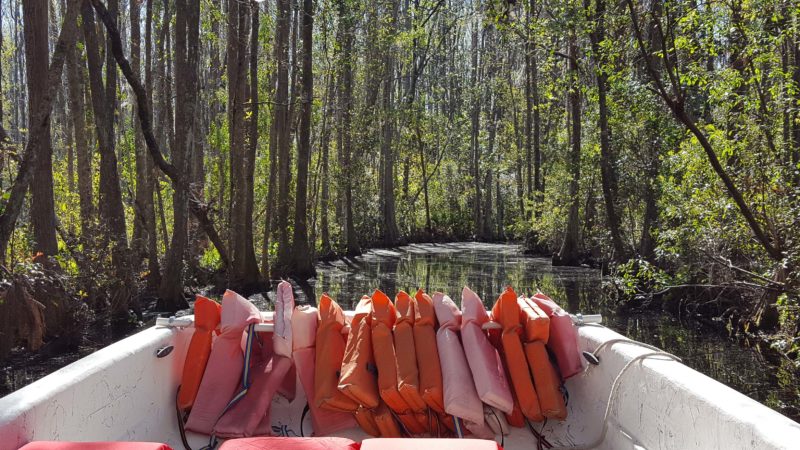
The front end of our boat as we traveled down the Suwannee River. The Suwannee and St. Mary rivers drain Okefenokee Swamp into the Gulf of Mexico.
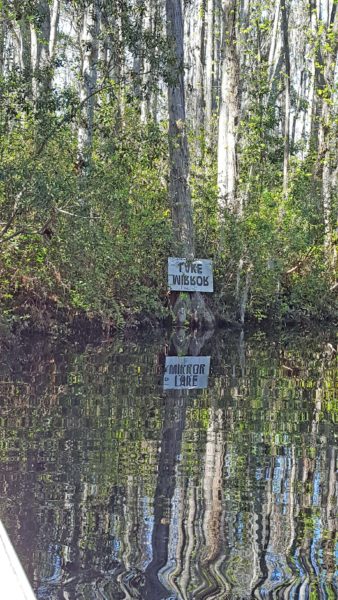
Mirror Lake. .ekaL rorriM
A pretty view under a walking trail bridge in the park.Our guide could name every plant in the swamp. Now we can name some of them as well.

Several varieties of water lilies are native to Okefenokee Swamp.
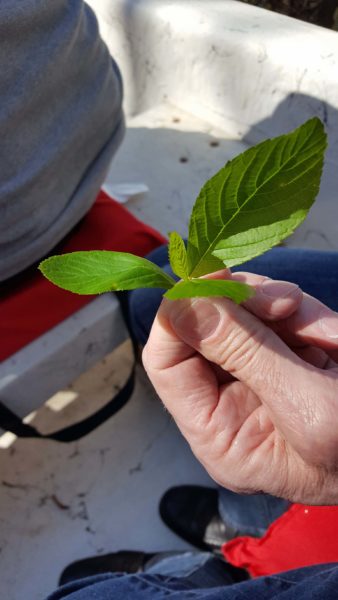
This is soapweed. Our guide made his hands wet, rubbed the weed vigorously in his palms and produced a generous soapy lather.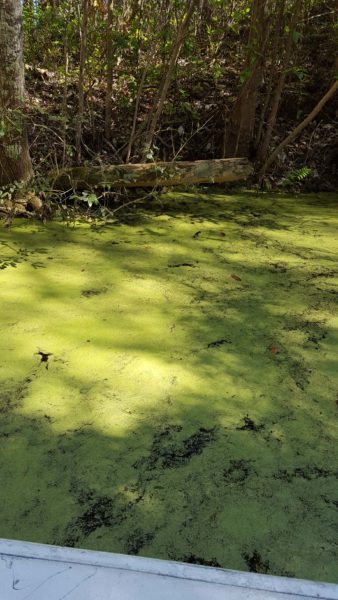
These are the smallest plants in the swamp. Look at the next picture to see some individual plants.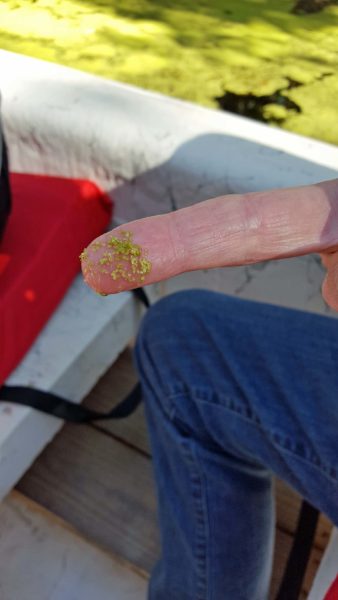
Ted has dozens of the plants on his fingertip.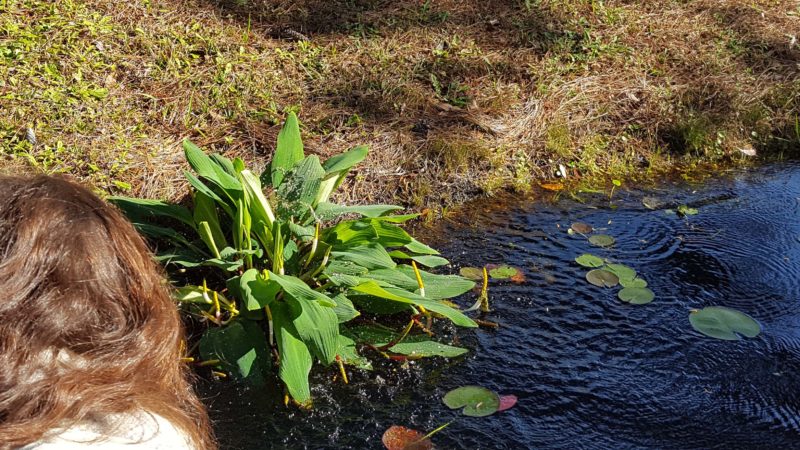
This plant is called “never wet.” It actually repels water and never gets wet. In a swamp!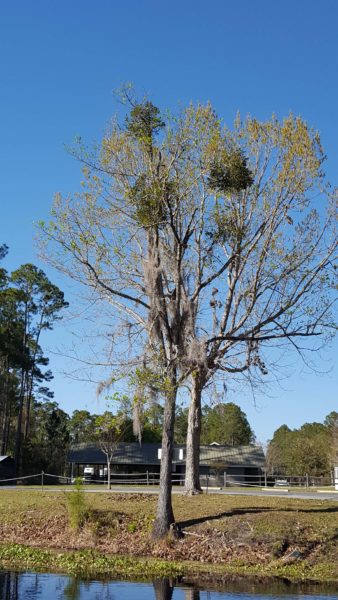
The green clumps in this tree are mistletoe, a parasitic plant.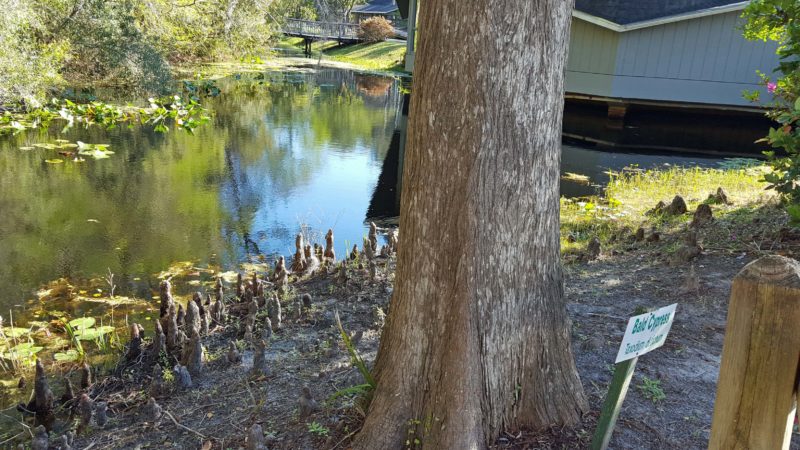
The bald cypress has very shallow roots, so it grows “knees” to help support itself. The knees–the knobby things growing upward–can grow as far as 100 yards from the tree’s trunk.We saw a half dozen alligators. None of the alligators was out when we visited the Everglades two years ago, so this is the first time Ted and I have seen alligators in their natural habitat. We learned that the females are much smaller than the males. The male alligator will fight and eat any other male alligators he encounters in his territory so he can have all the female alligators for himself. We had a glimpse of a baby alligator in the water, but it hid in the plants while our boat was nearby. Our guide said if you try to grab a baby alligator with your hands, it will rapidly bite you a half dozen times before you can let go. Ouch!

The bull alligator on the left is estimated to be 110 years old and is about 20 feet long. One of his many wives (on the right) is about 35 years old and 6-8 feet long.
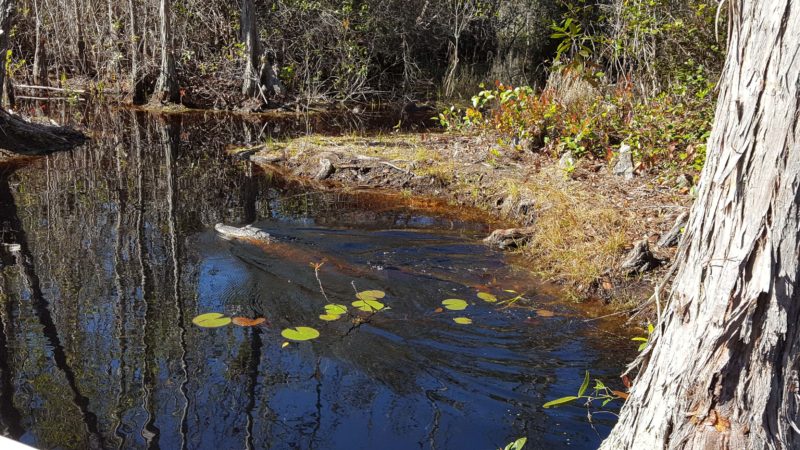
Look carefully. There is an alligator in the water.At one point on our tour, we got off the boat and climbed a viewing tower. I don’t know how high it was, but there were over 100 steps to the top and we were above the treetops. We had a small tour group and took pictures of each other.
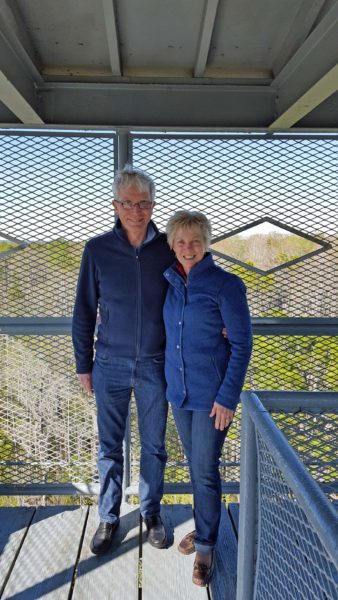
Ted and me in the viewing tower.
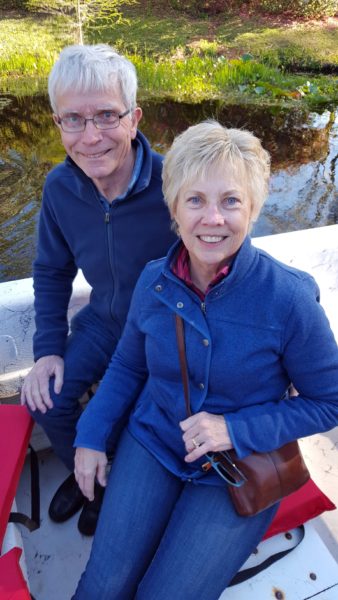
Here we are in the boat.We had a very nice afternoon and enjoyed visiting Okefenokee. We also greatly enjoyed our time in the Everglades two years ago. Are we weird to like swamps?